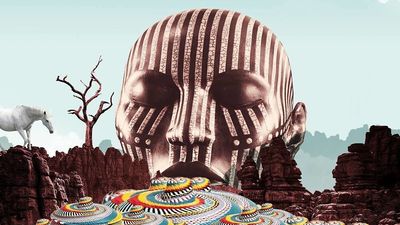NextGen: Isaiah Wakoli's Stimulating Art Is Inspired by Color's Interaction with Human Behavior
Kenyan artist Isaiah Wakoli looks to his experience living with color synesthesia as inpsiration for his digital art.
DIASPORA—Over the course of July we'll be publishing short profiles, essays and interviews on the theme of "Afrofutures." Together these stories will be a deep dive into the way African and diaspora thinkers, technologists and artists view a future for Africans in the world and outside of it.
Take a look at our introduction to Afrofuturism, here.
Throughout this month, we'll also highlight and celebrate young, leading talents who already put into practice what a future with black people look like through their work in our daily profile series, 'NextGen.'
In our ninth edition, meet Kenyan artist, Isaiah Wakoli.
We’ve featured several artists in the NextGen series who use graphic design, photography and visual art to stimulate our eyes and transport our minds to foreign worlds. Every artist has a unique style and perspective that inspires us to view our tangible world more critically and creatively. But Kenyan artist Isaiah Wakoli actually does see the world differently than some of us do, and it accents his vibrant, boisterous art: he has a rare gift called color synesthesia.
“I’m inspired by color, light and human behavior,” Wakoli says via email. “I have this rare condition called color synesthesia. I love color. I always try to associate moods and feelings with different colors. I love light, how it can fall on one thing and give it a certain character and yet again fall differently on the same object and give it a different character.
Synesthesia is a “union of the senses” or the rare ability to associate two or more senses with one another: such as seeing colors when tasting food or hearing music, or viewing letters and numbers as people, with actual personalities, moods and more. For some time, synesthesia was believed to be a mental dysfunction, or a philosophical topic that questions creativity and consciousness, but now more researchers are striving to understand it deeply, and synesthetes are welcomed to express their sensual experiences.
Wakoli’s art, which is saturated in rich, bold hues and shades, imagines people on lonely planets, morphing into nature or exposing a subtle, introspective side of humanity. “Human behavior has also been interesting to look at (in my work)—how everyone is quite unique in their own way," he says. "How their culture is a big part of their lives, and what happens when their culture crosses paths with a different one.” Perhaps the key to understanding nature, human behavior and the wonder of color, is in the synesthete’s ability to unite one sense with another.
